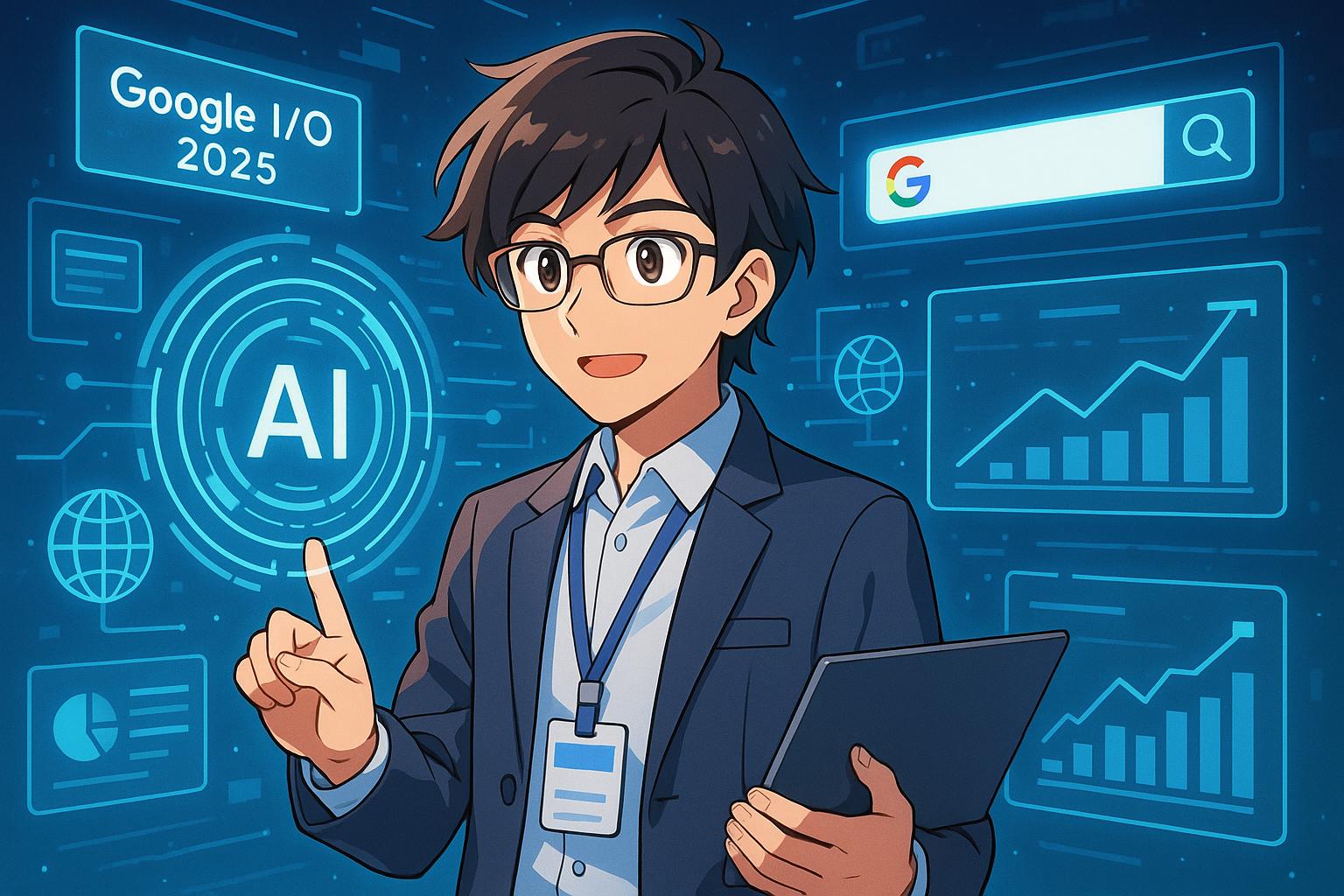At this year’s Google I/O, the tech giant made a substantial commitment to artificial intelligence, marking not just an enhancement of its back-end tools but a fundamental reshaping of how search, advertising, and brand presence operate in the digital landscape. With two flagship events this May—Google I/O in California and Google Marketing Live in Dublin—Google ushered in a series of ground-breaking updates that signal a dramatic evolution in marketing practices.
In a spirited recap of the Dublin event, The Drum's columnist Andrew Tindall remarked on the advancement of tools and their implications. He noted that while these tools are “genuinely brain-melting,” they also prompt an essential question: “What’s a silly little human marketer’s role in all this?” These rapid changes in technology raise critical concerns about control and capability for marketing professionals as AI takes centre stage.
Central to the announcements was the introduction of “AI Mode” within Google Search, a transformative overhaul that replaces conventional link lists with conversational responses made possible by Gemini, Google’s advanced large language model. CEO Sundar Pichai underscored during the conference that this approach aims to redefine nearly 8.5 billion daily queries while simultaneously addressing competition from nimble rivals like OpenAI. While AI promises greater efficiency, it also threatens the established search hierarchy, which contributes a hefty $198 billion in annual advertising revenue. The challenge lies in evolving the business model without compromising on its profitable foundation.
The updated “AI Overviews” feature is designed to streamline search results, presenting summarised responses embedded with sponsored content. This shift raises critical questions for marketers regarding control over ad placements and targeting. Traditional keyword strategies become less effective in this new paradigm, as advertisers will need to engage with broader themes rather than specific terms—a labyrinthine challenge given the reduced visibility into how information is aggregated and displayed. Google, however, asserts that it is maintaining quality standards for these ads, promising that they will still be relevant and high quality.
Beyond just search, Google also unveiled the AI Max for Search, an innovative automation layer that identifies high-intent queries overlooked by advertisers. By utilising historical data, it provides a lifeline for niche brands, but also complicates strategic decision-making. As marketers find their performance metrics drawn from delayed data and focused on aggregation, there’s a pressing requirement for deeper analytical engagement with data that was previously more transparent.
The event also highlighted the introduction of Asset Studio, powered by Imagen 4 and Veo 3. This tool allows marketers to generate and customise video and image ads via text prompts, significantly accelerating the pace of campaign creation. While efficiency is undoubtedly a benefit, there is the risk that creative outputs become homogenised, diluting brand identity and uniqueness in the process. Google has stated that the tool allows for the maintenance of brand distinctiveness, yet the demands for strong direction from marketers remain paramount.
Moreover, Google sought to make its Performance Max system more transparent by introducing channel-level reporting, enabling advertisers to understand budget allocations across different platforms, from Search to YouTube. Despite these improvements, inherent opacity remains a concern, as many algorithmic processes involved in targeting and optimisation continue to elude clarity. Marketers are now faced with a dual challenge: dissecting the data and processing the intricacies of these new systems.
In the realm of shopping, Google’s virtual try-on tools are now allowing users to upload their own images, marking a shift towards more personalised online shopping experiences. This innovation aims to enhance consumer confidence in purchasing decisions while expanding the visual commerce landscape. However, realisation of these benefits depends on seamless integration of product data and creative assets, presenting operational challenges for brands still leveraging outdated systems.
As the cookie phase-out looms, Google's new Data Manager was announced to create more accurate targeting using first-party data. Yet potential disparities in technological readiness mean that organisations relying on diverse legacy systems might find themselves excluded from these advancements.
The broader message emerging from Google I/O 2025 is unmistakably clear: automation is now an indelible aspect of marketing operations, but intent must remain front and centre. Google is not merely content to be a platform; it aspires to become the operating system of modern marketing, consolidating responsibilities from planning through to optimisation. This move is attractive, particularly to lean marketing teams seeking efficiency. Nevertheless, the increasing complexity of these tools necessitates a more discerning approach to strategy, highlighting that with mass accessibility to similar AI technologies, the ultimate competitive edge will derive not just from the tools themselves, but from the intent and strategy underpinning their use.
In this era of rapid technological change, Google’s developers and marketers must navigate this new landscape wisely, balancing innovation with the integrity of skills that define marketing effectiveness.
Reference Map:
- Paragraph 1 – [1], [4]
- Paragraph 2 – [1], [2], [5]
- Paragraph 3 – [1], [6]
- Paragraph 4 – [1], [2], [3], [4]
- Paragraph 5 – [1], [5], [6]
- Paragraph 6 – [4], [6]
- Paragraph 7 – [1], [3], [2]
- Paragraph 8 – [1], [5]
- Paragraph 9 – [1], [2], [4]
- Paragraph 10 – [2], [5]
Source: Noah Wire Services
